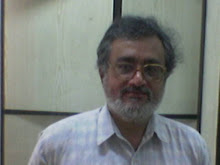Dr. B.R. Ambedkar is known as the messiah of the Scheduled Castes/Tribes. That sure he is. He led a mass conversion into Buddhism in 1956, and thus paved the way for Buddhist revival in India. But history should record the American-born Colonel Olcott and Anagarika Dharmapala as his fore-runners.
Col. Olcott started schools for the Dalits and the social rejects of those days, even before Dr. Ambedkar was born. At the same period, Dharmapala was the first to feel there was a great potential to win over the hearts of the untouchables in India, whom the caste Hindus persecuted. He pointed out the need for converting 65 million of untouchables into Buddhism. He had expressed his frustration thus: “I wish to start a propaganda to carry the Dhamma to the untouchables, but I am now very weak.”
Dr. Ambedkar, along with his followers, got converted to Buddhism on October 15, 1956. This is recorded as the first historic mass conversion to Buddhism. But 58 years earlier, there was a mass conversion of untouchables in Colombo, the majority of whom were Indians. On July 1, 1898, Col. Olcott, accompanied by Dharmapala led a delegation of the untouchables from the southern India (members of the Sakya Muni Society, and who left Madras for Colombo). Olcott and Dharmapala presented the large group of untouchables from India to the High Priest of Vidyodaya Pirivena. And they took Pancasila in Sri Lanka. Then a history was created, soon forgotten. Thus the contribution of Dharmapala and Col. Olcott to revival of Buddhism in India is remarkable.
Anagarika Dharmapala, who took to the religious ministry of Buddhism under Theosophical auspices, became the first missionary of the Buddhist revival in India in 1891 when he founded the Maha Bodhi Society in Chennai. He fought for the transfer of the Buddha-Gaya temple complex to Buddhist hands. He enlisted the cooperation of influential men in India and Asian countries those days for this effort and succeeded in establishing a strong Buddhist presence in India.
The Maha Bodhi journal, started by him as the organ of the Society, was patronised by Indian intellectuals such as Rabindranath Tagore, who contributed articles and poems to it; it evoked widespread enthusiasm among educated people for the Buddha and his religion.
Dharmapala’s signal achievement was the social base he built up for Buddhism to flourish again in India. He arranged to establish active centres of Buddhist worship.
Dharmapala spent in India 40 years of his life of 69. He worked day and night for the revival of Buddhism in India. Though Dharmapala was born in Sri Lanka and ceaselessly loved Sri Lanka, he was not keen to die and be buried in his own country. His desire was “to breathe my last after having entered the Buddhist order in the land of Buddha, purified by the tread of peace-loving Buddha’s feet.”
Realising that his end was near, Ven Sri Devamita Dharmapala, as he came to be called on his getting ordained, said: Don’t waste your money on buying medicine for me; use that money for Buddhist works. “This is final moment. Let me be reborn and help to promote the Buddha Sasana in India. I am prepared to be born 25 times over or more times so as to help spread the Dhamma of the Great Teacher, the Samma Sambuddha over all the world.” Mouthing that wish he breathed his last on April 29, 1933.
His is a big name in Sri Lanka. This great Sri Lankan, who is responsible for Buddhist revival in India, is a forgotten, unsung hero here.

No comments:
Post a Comment